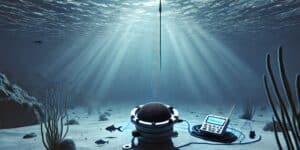Just as noise pollution exists above the surface, our oceans also experience this type of contamination. Human activities under and above water such as commercial shipping, sonars, exploration and construction, as well as seismic surveys, endanger the environment as their continued employment is responsible for the rising levels of noise pollution in the ocean. Noise pollution in the sea has a great impact on the underwater flora and fauna, causing significant effects on the marine ecosystem. In addition, sound level contamination in the ocean can prove potentially fatal for animals that rely on sounds to survive. Water is a crucial component to sustaining life on Earth, so it is important that our oceans and its natural inhabitants are kept safe and away from harmful threats if we want to thrive alongside them.
What is noise pollution?
Human presence and its interference in the oceans create extra noise that scientists have called ‘anthropogenic noises’, which are purposeful and intentional. The introduction of anthropogenic noises in the ocean derives in noise pollution underwater. These man-made sounds can be wide and varied in frequency and intensity (they are measured respectively in hertz and decibels and can be high-intensity and acute or lower-level and chronic), which can end up affecting marine life and its ecosystem. Underwater noise pollution can mainly be found in routes that are well-traveled, and in particular this event manifests itself in coastal and continental shelf waters.
Underwater human activities such as shipping, industry constructions, oil exploration, seismic surveys and military sonars and explosions create sounds that can lead to increasingly damaging consequences for marine animals, especially for those who rely heavily on echolocation (meaning marine mammals that depend on sound to navigate the oceans, like whales and dolphins) to move around the water, communicate and be able to survive.
Four sources of noise pollution in the ocean caused by humans
Here you will find four major sources of noise pollution in the ocean that were caused by human activity:
Your environmental monitoring at your fingertips!
Optimize your environmental monitoring, become smarter and more sustainable with a unified system that gathers all your environmental sensors & data in one place.
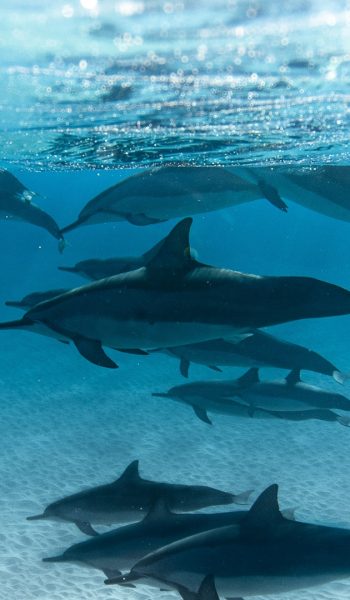
1. Commercial shipping
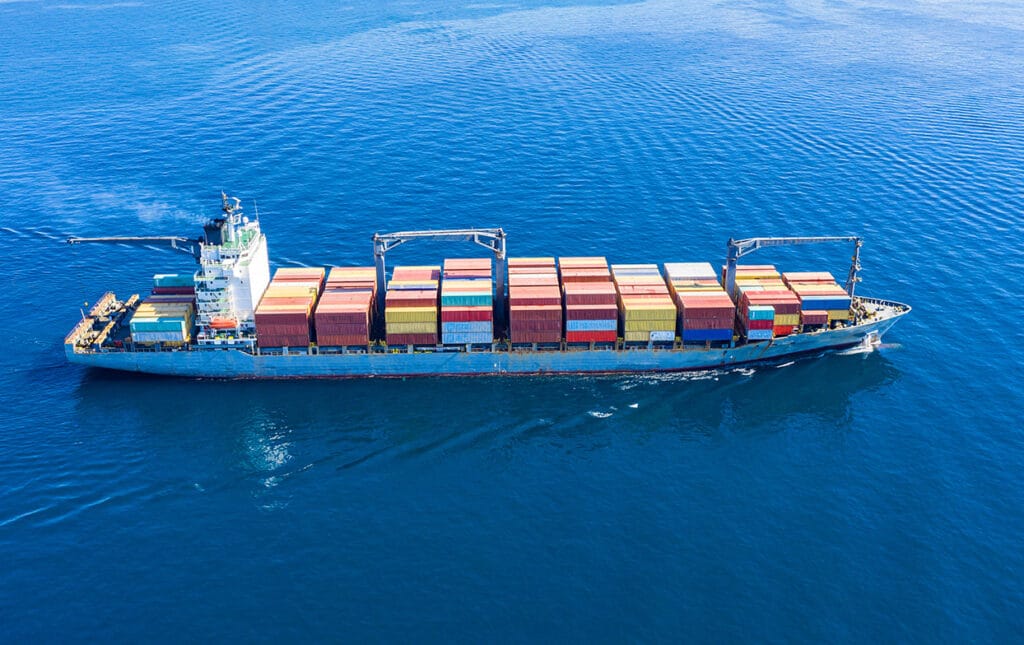
Commercial shipping is a major contributor and the most common source of noise pollution in the oceans. Most of the underwater noise is caused by a ship’s propeller cavitation, that is, the bubbles that are generated and implode due to excessive propeller speed. Another big source of ocean noise pollution produced by ships are their hull vibrations, and the vessel’s diesel engines.
Ships produce a low frequency sound that goes from 10 Hz up to 1 kHz. For reference, the range of frequencies used by whales goes from 10 to 31 Hz, although it varies from one species to another. As ocean traffic is not evenly distributed and some areas are more frequented than others, like travel and commercial routes, these particular spots in the ocean will discover their sound levels increase significantly when a vessel passes by. This is also true for ports and harbors, as they are typically places of ship concentration. And even when there are no transports around, the background sound level that operates at low frequencies will still be mostly caused by ships in the vicinity since low frequencies can travel longer distances underwater, and it ends up generating disruptive effects in fish and other marine mammals in the vicinity, since they primarily depend on sound to move around and communicate with one another.
2. Sonars
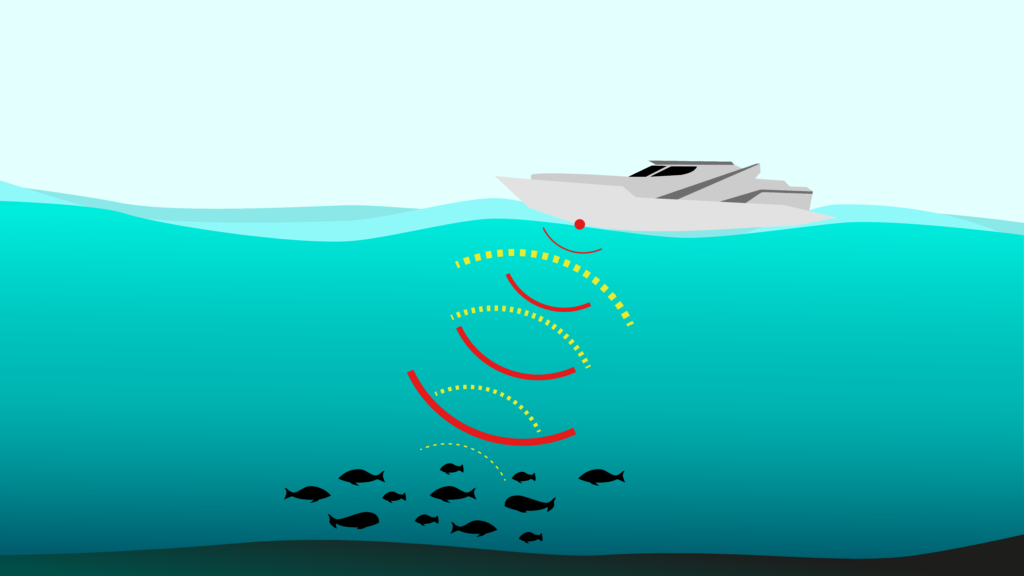
Sonars are also important sources that contribute to underwater noise pollution. There are two types of sonars: the passive ones that listen for underwater sounds, and the active sonar systems that emits sounds to detect and locate objects using the returning echo. These active sonars are primarily used by the military in exercises and routine activities such as searching for objects underwater like enemy submarines.
Active sonars can be categorized based on the frequency of the signals they send out, which are classified as low (less than 1 kHz,) mid, and high (10 kHz or more.) Since not all marine species operate on the same level of sound frequency, some animals may be more affected than others depending on the intensity and duration of noise emitted by sonar systems. If not adequately monitored, sonar systems can end up heavily disrupting the underwater animals’ lives and behaviors, for example, causing hearing loss in fish and making whales lose their way as the unwanted noise interferes with their echolocation and can end up stranded ashore.
Your environmental monitoring at your fingertips!
Optimize your environmental monitoring, become smarter and more sustainable with a unified system that gathers all your environmental sensors & data in one place.

3. Construction activities in the ocean
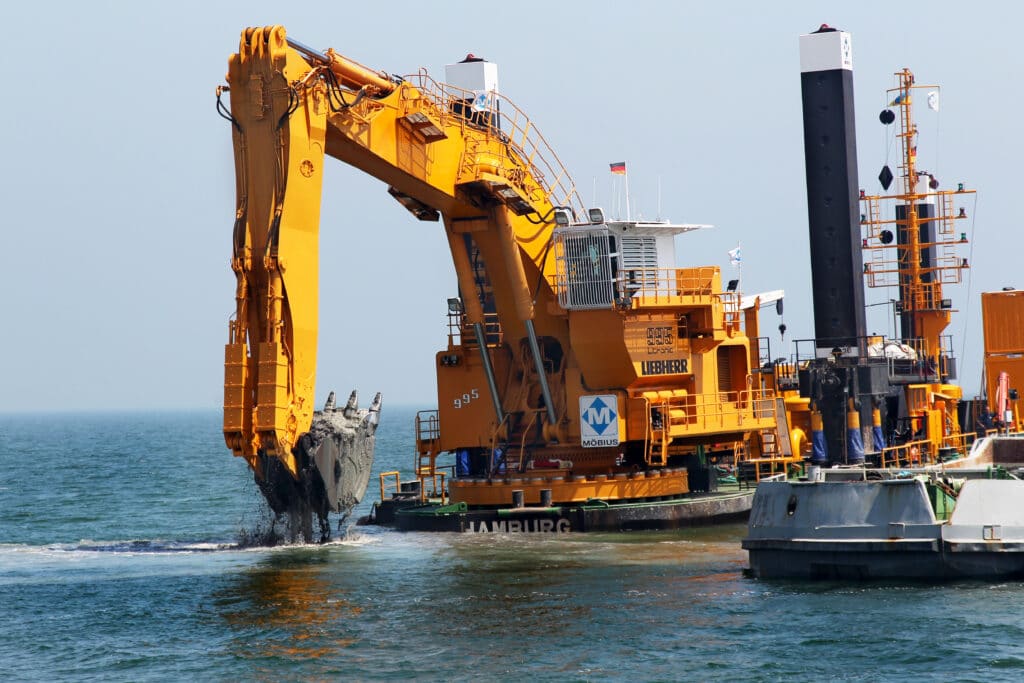
These activities, either along the shoreline or offshore, such as dredging, platforms, drilling and installing oil rig platforms, among other things, create massive amounts of noise emissions too. It’s no secret that construction work on the surface is a usually noisy activity, and underwater they are not exempt from creating sources of noise. Continuous use of machinery and transports that emit loud noise at low frequencies end up disrupting the ocean’s flora and fauna.
Marine dredging is frequently used in coastal waters to deepen or widen channels for passing ships and to mine seabed resources. Not only does this activity change the composition of the soil, potentially making underwater plants and vegetables disappear or meddling with fish’s homes and nourishment, but it also increases sound levels in the ocean, reporting between 160 to 180 dB re 1µPa @ 1 m and an intensity of 50 to 500 Hz. Meanwhile, in oil and gas activities such as drilling, placement of offshore structures and production, located mainly on the continental shelf, underwater noises derive from drilling machinery and propellers and thrusters, generating sounds that can go up to 135 dB re 1µPa @ 1 m and intensity peaking at 40 to 100 Hz.
4. Seismic surveys
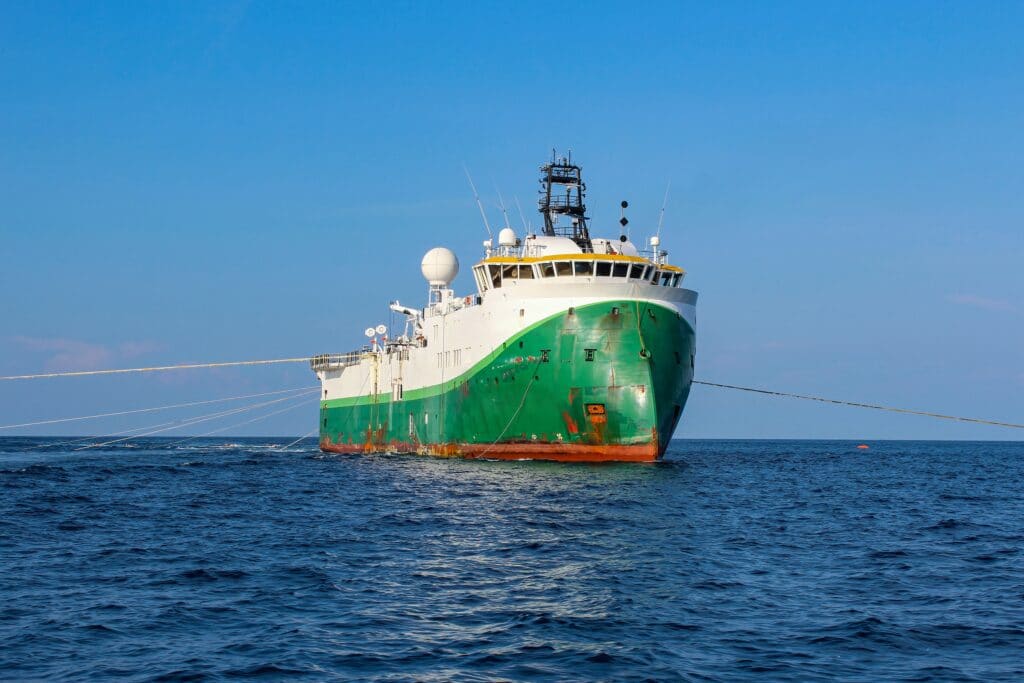
A fourth but no less important source of underwater noise pollution are seismic surveys. These are a method of gathering information regarding the characteristics and locations of geological structures of the Earth’s surface above and below to produce maps that can help identify the areas where there is oil and gas to be found.
In order to look for these spots that may contain gas, oil and gas industries search around the seafloor with the aid of seismic air guns. These seismic air guns produce low frequency sounds that can extend for up to 4,000 km at times. The blasts are continuous and can last from seconds to days up to months. The employment of seismic air guns has a direct impact on marine life as the sound that is blasted and carried by the currents actively interferes or overlaps with the underwater species’ communications. It can also have an effect on the regularity of sightings of these animals near the shores and reduce fish catches as well.
Why is it important to reduce noise pollution in the ocean?
By purposefully tampering with acoustic levels and frequencies in the ocean, we are not only failing to protect the marine flora and fauna, but also to prevent health issues in human populations in coastal areas and maintain a safer environment in general. One of the ways to promote a safer and healthier environment for both humans and marine animals alike is to invest in a “Blue economy,” a term used in economics to name the approach for a sustainable management of ocean and coastal resources. On a wider scale, it includes all ecosystems around seas, lakes and rivers. It offers the possibility of having more efficient land and ocean management, improved governance of marine ecosystems, lowered greenhouse gas emissions. Noise pollution in the ocean in a global problem that must be tackled on by governments coming together and imposing regulations and developing ways to keep good track of healthy levels on sound in the oceans so that we can all thrive in one perfectly balanced ecosystem.
Frequently Asked Questions About technologies that ships have
Underwater noise is bad because it harms marine animals by preventing them from hearing natural ocean noises, pushing them away from their natural habitat, and even changing their migration patterns. This in turn impacts the ocean environment and natural ecosystem.
- Smooth communication
- Safety
- Cost-efficiency
- Operational efficiency
- Carbon impact reduction
Underwater noise pollution affect marine flora and fauna because the anthropogenic noises (that is, sounds generated by humans) it can create physical and behavioral issues in animals, such as interference noise with those who use echolocation to navigate the seas, communicate and find food, and can experience stress and hearing loss if exposed for long periods of time.

